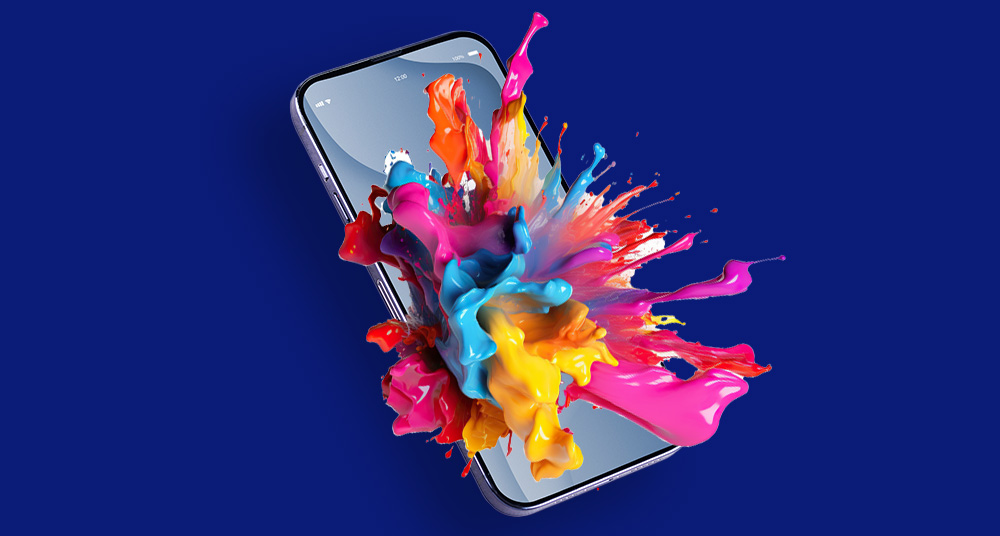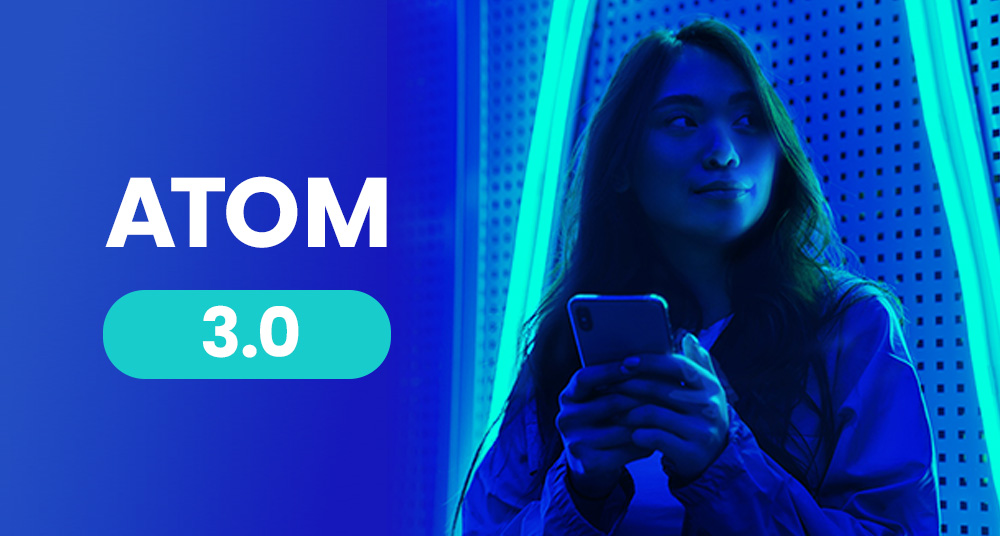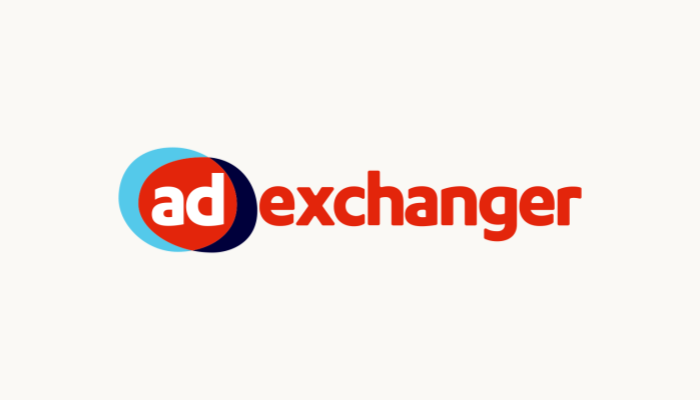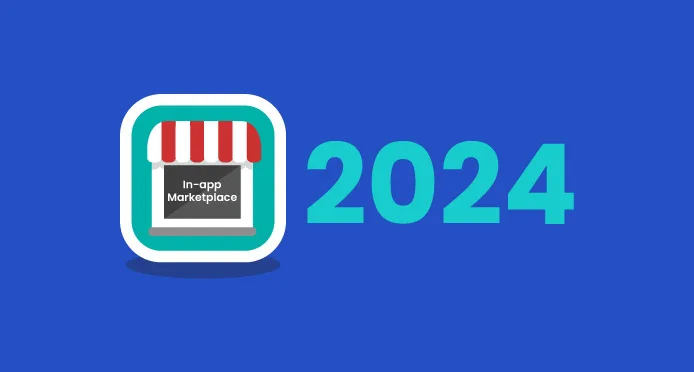The mobile privacy dichotomy: Users’ complex relationship with data

Survey findings: how app publishers can build trust, protect user data, and deliver relevant ads in a data privacy-focused way.
Building better video ad experiences with HyBid SDK

Full-screen video ads have become a powerful tool for in-app advertising, capturing attention for both branding and performance campaigns. In this blog, we’ll explore how publishers and advertisers can deliver exceptional full-screen video ad experiences with the HyBid SDK. We’ll unpack top-performing ad formats like interstitials and rewarded ads, when to use video vs. HTML creative, and which ad features specifically boost click-throughs and reduce app drop-off rates. Rewarded and interstitial full-screen ad formats Imagine ad formats as a container and the creative as the content that fills them. For video ads, we find that rewarded and interstitial full-screen ad formats are the ideal containers for video creative. The HyBid SDK supports many ad formats — including banner, MRect, full-screen and more — but let’s focus on rewarded and interstitial today. Rewarded video Rewarded videos can be displayed at transition points or initiated voluntarily by users when they want to earn extra in-app currency or points. While publishers have the flexibility to choose how and where to position these ads, the best practice is to make them user-initiated. This approach ensures that the user experience remains uninterrupted and more enjoyable. Interstitial ads Video interstitial ads are full-screen ads that appear at natural transition points, such as between game levels or during pauses. Featuring countdowns and close buttons, video interstitials offer users the option to exit the ad, enhancing user control and engagement. The creative These ad formats can contain static or animated images, HTML, or video creatives. All these creative types can be used with various ad formats, such as banner, native, interstitial, and rewarded ads. Video ads Video ads offer a short, and immersive experience that leverages the engaging nature of mobile apps. These ads can be up to 30 seconds long, making them ideal for capturing user attention and raising brand awareness. Video ads create a lasting impression on the audience by delivering compelling content that effectively showcases the app’s features and benefits. Playable ads Playable ads are interactive advertisements that allow users to experience a mini-game or demo, giving them a taste of the game mechanics before downloading the app. This interactive experience makes the ad memorable and enhances user engagement. The functionality behind playable ads is powered by HTML, a lightweight code that enables these interactive elements. This type of engagement not only boosts brand recognition but also effectively simulates the in-game experience for potential users. HTML creatives are particularly effective when utilized within interstitial and rewarded ad formats. Optimizing performance campaigns The difference between branding and performance campaigns lies in their objectives and strategies. For branding campaigns, the primary goal is to increase brand exposure by ensuring the audience completes the video. In contrast, performance campaigns aim to drive specific actions, such as app downloads, to streamline the ad funnel. To optimize performance campaigns, the best practice involves: Video ad content: Engaging and concise to capture immediate interest. Companion ad: An interactive demo of the game to encourage user interaction. Custom End Card/StoreKit: A tailored end screen that directs users to download the app. 4 elements to improve engagement and ad experience for users There are two distinct layers in the ad structure. The first layer is the creative content, which includes elements such as videos and HTML, as previously discussed. The second layer consists of enhancements added by the exchanges, such as user interface (UI) elements and new touchpoints to help a campaign be more effective. Let’s look at four touchpoints publishers can activate for engaging campaigns in the HyBid SDK. Custom End Cards A second or custom end card is an additional layer at the end of an ad, designed to boost engagement and provide a final interaction opportunity. It is often used in triple-stage video ads, serving as the second end card. This feature is also referred to as a second end card or dual end card. However, in the context of the HyBid SDK, it is known as a Custom End Card. This type of Custom End Card integrates information from the app store, such as the app logo and name, which are not part of the original creative content. https://verve.com/wp-content/uploads/2024/06/Custom-End-Card.mp4 StoreKit Auto Open As part of Apple’s StoreKit framework, an App Store page or a specific app’s product page can automatically open within the app, eliminating the need for users to exit the app. This reduces drop-off rates and minimizes the intrusiveness of the ad experience. StoreKit Auto Open is activated by a user’s touch on the screen, and it slides from the bottom to the top. https://verve.com/wp-content/uploads/2024/06/Storekit-Auto-Open.mp4 StoreKit vs. Auto StoreKit StoreKit is user-initiated, meaning the user actively engages with it. In contrast, an Auto StoreKit is triggered automatically by the SDK without user initiation. While both use the same UI components, the key difference lies in how they are activated. SKOverlay Another feature of Apple’s StoreKit framework allows users to install apps without leaving the current app. It appears as a banner that pops up at the bottom of a video ad, providing a seamless and non-intrusive installation opportunity.https://verve.com/wp-content/uploads/2024/06/SKOVERLAY.mp4 Custom Call-to-Action (CTA) The Custom CTA is a compact banner positioned at the bottom of the ad, featuring a call-to-action button. This tailored CTA element is designed to catch your app user’s attention and ensure a smooth transition from the ad to the app download. CTAs are typically used when full-screen clickability is disabled, ensuring that clicks are more organic and genuine. Video ad rendering: interstitial vs. rewarded video Depending on the ad exchange, full-screen video ads can feature a range of touchpoints and configurations, such as skippability delays. For app publishers using HyBid SDK, here’s what the default configurations are for interstitial and rewarded video ads. Interstitial Rewarded Video Skippability 5 sec by default, skip button countdown indicator 0 to 30 sec + 5 sec if end card Skip button size/area 30 x 30 px 30 x 30 px Skip button location Top left Top left Close button location Top left Top left Default audio…
The case for mobile gaming apps and video advertising

Gamers are no longer a niche audience. It’s time for brands to include mobile gaming apps in their video advertising strategy.
Back to Basics: What are splash ads?

Learn the benefits of splash ads and why this format is gaining popularity in China, and captivating global audiences.
Inside look at ATOM 3.0 and the shift toward ID-free mobile targeting

The loss of signals The internet is now divided into two categories of users: authenticated and anonymized (unauthenticated). Authenticated users allow access to identifiers (IDs) or personally identifiable information (PII) — given relevant consent permissions are obtained from the user. Meanwhile, unauthenticated users demand anonymity and privacy from personalized advertising. Reality check: ID-less is the default. For example, we see on our marketplace that only 30% of the iOS user base is authenticated traffic; unauthenticated iOS devices account for 70%. While Android devices are still available with GAID, this is bound to change in the next few years as Google continues its efforts toward a more privacy-focused targeting infrastructure with key partners, including Verve. While the internet user base is split into two, the ID-free solutions landscape is more fragmented than ever, leaving buyers and sellers with multiple technologies to test and validate. That said, not all solutions are equally future-proof. Popular alternatives like third-party IDs/Universal IDs rely on user consent or authentication — so they only address the smaller pool of users who agree to the silent value exchange of their time, attention, and identity in return for free content. Predictably, an overwhelming majority of advertisers and publishers are increasingly testing and gravitating towards contextual solutions that are 100% ID and PII-free. Verve’s investments in Anonymized Targeting on Mobile, or ATOM, are in this realm; more specifically, cohort-based targeting and monetization. Since ATOM’s launch in 2021, we have doubled down on our investment in machine learning models, working closely with demand partners to understand cohort requirements specifically for performance use cases, and establishing validation framework to improve cohort efficacy. Today in 2024, we’re rolling out a new evolution: ATOM 3.0. Below, we unpack how ATOM 3.0’s on-device cohorts are radically changing the game for mobile targeting and monetization. What is ATOM 3.0? ATOM 3.0 is an on-device cohort targeting and monetization technology for mobile marketers. It’s a privacy-centric approach to targeting and monetization, built for a world without IDs. ATOM 3.0 uses machine learning/computing models to process device signals and real-world context of users to predict user traits and classify them into cohorts. It uses no IDs/PIIs, and all data processing and storage happens securely within the user’s device. ATOM 3.0 offers more predictability to our buyers in identifying users and understanding user traits that help place better bids in the absence of IDs. Publishers, as a result, stand to gain from improved bid rates and higher eCPMs (compared to the IDFA-less eCPMs today). But how does ATOM 3.0 achieve these benefits for publishers and buyers? Does it have scale? ATOM 3.0 is now bundled with the HyBid SDK 3.0. This integrated model means our publisher partners can pick up the regular ad SDK with the ATOM module to monetize their ID-less users. Absolutely no integration hassles! (Added bonus: it’s free to use ATOM 3.0 within the SDK.) Verve operates one of the largest in-app marketplaces globally, meaning access to over 1.5B users across 10K+ publishers. For buyers, this provides a scaled solution compared to the challenges they face with alternate ID-based audiences like third-party/Universal IDs that have no meaningful reach or scale within mobile apps. What targeting is available? ATOM 3.0 now supports 30+ cohorts, over 10 key cohort categories including sought-after segments like demographic, interest, mobility — in addition to new segments that are key to performance buyers like engagement, playtime, and attention. Click to enlarge Is it precise? The precision of cohorts is a function of the degree of confidence by which we could ascertain whether a certain cohort is what it claims to be. For example, how do we determine with confidence if a user identified under the cohort “Gen Z Female Gamer” is necessarily the person they are identified as? This is precisely where trained cohort computing models prove its worth. ATOM 3.0 uses the freshest signals (device, app, or activity) that reflect what’s happening at the moment, every time a user opens an app. Due to the nature of how cohorts are built on the device runtime, the cohorts are recalculated every time the user runs the app. This ensures cohort relevancy at the time of the ad request. Case in point Take the example of a very specific cohort like “Female Gaming Enthusiasts with High Attention and at Home.” We can process and observe signals (like gesture patterns, session count/depth, daily usage time, battery charge, reachability, screen brightness, to name a few variables) to arrive at a degree of confidence with which we could ascertain that the user falls under the described cohort. These signals and variables are observed over a period of time to fine-tune cohort information. Further, the cohorts are validated with seed data, against deterministic identifiers (where known), our O&O data apps, to name a few. How is performance improved? Better bid decisioning via incremental signals For performance buyers, ATOM 3.0 provides incremental signals over and above the contextual intelligence that you receive through the bidstream. While contextual signals (like app bundle ID or other metadata information) point to a user’s moment of intent in a particular point in time, it may not provide a sufficient picture of the user behavior. An ATOM cohort is a combination of many such moments observed over a period of user activity that helps paint a better picture of a user’s behavior. Think of context as a single slice of an entire pie; the pie being a cohort. ATOM 3.0 can provide additional information that strengthens the bid request and allows DSPs to make a better bidding decision (on top of the contextual signals). Incremental user information for targeting Additionally, ATOM 3.0 provides incremental cohort information (i.e., groups of user profiles) that allows bidders to understand with better degree of confidence on what type of users they are seeing in the case of ID-less requests. Recreating lost audience segments With the loss of IDs, brand buyers have restricted visibility into key audience segments like demographic or interest, that were the…
Verve capitalizes on the PET trend with on-device cohort-based targeting

In the news: App developers and their ad tech partners have been attempting to mitigate the impact of ATT on iOS addressability and measurement. Verve was early out of the gate with its release of an alternative targeting solution, now called ATOM 3.0 (or Anonymized Targeting on Mobile). ATOM 3.0 uses on-device and contextual signals to aggregate audience cohorts without relying on user-level identifiers, such as the IDFA.
5 strategies to enhance user ad experience: A guide for gaming publishers

Reality check: gamers prefer minimal interruptions from ads while playing. There’s good news for gaming publishers: advancements in ad tech can address monetization challenges and enhance the overall user experience for players — all while running ads. Understanding user demographics, preferences, and behavior means that we can better tailor ad strategies to enhance engagement while ensuring ads remain effective. Let’s review key strategies to improve the ad experience for users while maintaining performance for publishers. Know your user: understanding demographics and preferences To craft effective ad experiences, it’s crucial to know your audience and understand what influences their behavior. Factors such as age, gender, location, and economic climate play significant roles in shaping user attitudes towards ads. The latest data from eMarketer shows that the age and gender composition of gamers is shifting significantly. More diverse age of users as well as parsed residence is pushing developers to be more sophisticated in the choice of ad creatives, ad placement, and ad frequency to match their preferences. 74% of non-paying users from younger generations and Tier 2/Tier 3 countries mainly enjoy ads with reasonable frequency capping — and even tend to make more purchases from the brands advertised. However, engagement and retention of older generations in the same scenario could decrease dramatically; this demographic group tends not to tolerate too many ads. Another notable demographic shift is geography, with Tier 2 and Tier 3 countries emerging as significant players. Mobile gamers are booming across MENA (Turkey, Saudi Arabia), APAC (India, Thailand, China), and EMEA (Nigeria, South Africa), with 92% of them gaming every day. Tailor your ad formats and placements Different game types demand tailored ad approaches. Hyper-casual and casual mobile games thrive on a mix of ad formats, including banners, interstitials, and rewarded videos. Mid-core and hard-core PC/console and mobile games tend to focus more on less intrusive ad options like rewarded or in-game ads that appear less frequently. Gaming publishers can consider testing banners, but they should be less represented than other formats. Issues with clickability of in-game ads can be balanced there by ad revenues coming from rewarded and banner ads. According to an IAS report, today more than 60% of users are open to non-disruptive ads that are related to the content of the game. Enhance engagement across channels: the omnichannel approach Big opportunities lay ahead for ad monetization activities, including: Preferred deals can bring higher eCPMs and better fill as well as secure ad quality. As games begin to reach bigger screen sizes such as smart TVs, preferred deals could have a significant impact on facilitating this transition. With users engaging across multiple devices, adopting an omnichannel approach can significantly boost engagement and ad performance. 72% of console or PC gamers play on more than one platform. Diversifying ad formats based on device usage can further enhance user engagement. Use what you have: first-party data for behavioral and contextual targeting Publishers can deliver more relevant ads to their audiences by using first-party data for behavioral and contextual targeting. For addressing the ID-less and cookieless world, leveraging first-party data is one of the essential strategies for marketers and publishers alike. In-gaming publishers can use behavioral information — such as in-app actions, time of day, purchase history — to tailor ad experiences within the app. According to eMarketer, 61% of gamers in the US mentioned that they prefer to see ads that are related to the content of the game the are playing. Advanced targeting options such as geo-fencing and contextual ad technology can also enhance ad relevance and effectiveness. Apple’s ATT and the end of device fingerprinting challenge user identification and advertising/monetization in general. Users have become more sensitive and demanding when it comes to ad content. For the foreseeable future, exploring contextual solutions and UIs, as well as education about more effective use of first-party data, will likely be inevitable. Embrace flexibility and testing Maintaining open communication and transparency among publishers, ad networks, and demand partners is essential for optimizing ad strategies. From the SSP perspective, we’re really honing in on empowering our publishers and demand partners with greater control, all the while prioritizing user experience. Here’s the breakdown: developers and publishers get to manage the general settings, while demand partners and advertisers focus on bidding for inventory that aligns best with their campaign objectives. And you know what? It never hurts to explore new ad units, integrations, and buying models for publishers and developers. We’re all about sharing insights and best practices, paving the way for improved revenues without sacrificing user retention and engagement. Embracing a culture of testing allows for continuous refinement of ad formats, placements, and buying models to adapt to evolving user behaviors. 85% of gamers confirm that the most user-engaging formats remain interstitial and rewarded video. Putting it all together If you’re a gaming publisher, you’re probably already using one of the strategies (at least) we’ve just discussed. But more is more, and it’s worth exploring how to implement all five of these strategies holistically. With all five working together, publishers can create ad experiences that are not only engaging but also respectful of user preferences. It’s a win-win that ultimately leads to improved performance and user satisfaction.
How advertisers can drive mobile performance after iOS Privacy Manifest enforcement

It’s official: Apple will begin to enforce privacy manifests on May 1, 2024. Apple’s new policy will shake up mobile app marketing in particular, because privacy manifests serve Apple’s end goal of restricting probabilistic attribution and ending fingerprinting.
What’s next for the mobile in-app marketplace: Verve’s 2024 outlook

As we step into 2024, we’re reflecting on our key product achievements from 2023. Last year was a period of significant growth for our in-app marketplace, PubNative. This has set the stage for a stronger path to value for our demand and supply partners in 2024 and beyond. Highlights from 2023 Topping the charts for mobile scale and quality The Pixalate SSP Market Share Report ranked Verve as North America’s top mobile SSP for both Apple App Store and Google Play. Verve maintains this lead for the third and second consecutive quarters for Google and Apple, respectively. Notably, Verve’s market share in Apple’s platform rose from 17% to 28% between the second and third quarters. Globally, Verve now ranks first in APAC on Google Play, second in LATAM, third in APAC on the Apple App Store, and fifth in EMEA. In 2023, Jounce Media released a benchmarking report that ranked Verve as the leader in providing premium mobile app supply, ensuring quality ad experiences at a lower cost. Verve delivers 79% of premium mobile app supply — more than any other SSP. Jounce Media is one of ad tech’s most authoritative voices in programmatic supply chain management. Performance powered by interstitial units The interstitial ad inventory on PubNative (our in-app marketplace) increased by 115% in ad request volume. This growth is thanks to our expanding footprint of SDK publishers from a wide range of mediation and bidding platforms. This surge is also due to an increasing demand for high-impact performance ad units (especially interstitial video) on the marketplace. Advertisers prefer these ad formats because they help drive better conversions. Our revamped interstitial suite now supports multiple performance-first features including SKOverlay and Storekit Auto Open. You’ll also find a completely refreshed ad template that balances user retention and conversion goals. Verve’s in-app marketplace, now on Ironsource Verve is a key demand partner for top monetization platforms, including Applovin Max, Google Ad Manager, Google AdMob, DT Fairbid, Amazon Transparent Ad Marketplace, Prebid, and Nimbus, to name a few. This year, we broadened our publisher footprint by partnering with Ironsource, a significant expansion that lets publishers (especially in the gaming vertical) access diverse demand sources from PubNative’s exchange. Thanks to the integration, publishers connected to Ironsource can now efficiently monetize their interstitial inventories through both waterfall and bidding demand. More transparency and easier optimization with bid stream enhancements As an ad marketplace, we strive to improve our bid streams continuously to help buyers optimize towards their goals efficiently. In 2023, we introduced a few significant updates, including “minimum bid to win” and “bid loss notifications” to drive better transparency for your bid decisions. These additions also give DSPs crucial insights into the competitive landscape of ad auctions and detailed reasons for lost bids. What’s ahead in 2024 The year ahead will pack some significant updates relevant to our publishers and demand partners, beginning from Q1 2024. Below are some of the highlights to keep an eye on in our in-app marketplace. Powerful SDK Updates: In the upcoming SDK updates in Q1, we will continue to make improvements that are performance-focused, while introducing new SDK modules that are critical for privacy-first monetization. More ID-less scale with ATOM: We are making significant upgrades to ATOM to help publishers and demand partners make use of the on-device cohorts at scale to recapture unaddressable users. A new powerful version of ATOM (or Anonymized Targeting on Mobile), with updated cohorts, will be available to our publisher partners to integrate, very soon. Privacy Manifests: Privacy manifests are essentially files (created in Xcode) that every SDK and app developer will need to fill and add to their app. These files describe which user data the app is accessing and how the app developer is intending to use it. Moving forward, whenever an app developer prepares to upload an app to the App Store, Xcode will combine Privacy Manifests from all third-party SDKs used by the app into one comprehensive privacy report. PubNative, an in-app marketplace, is addressing this change by preparing our SDK to support Privacy Manifests. Our upcoming iOS SDK will be completely compliant to the Privacy Manifest requirements, well ahead of Apple’s enforcement. More tests with Google Privacy Sandbox: Google is finally phasing out third-party cookies for 1% of the world’s Chrome users. Verve will build on our 2023 momentum and continue to work closely with Google and other ad tech partners to test the Sandbox APIs and share results as we make progress towards a more privacy-conscious approach to targeting users on mobile. Advertising is on the brink of a privacy-first era filled with potential and promising opportunities. 2024 could not be more exciting, and we are confident that the foundation we built in 2023 has positioned us to support and drive our client objectives and growth.
